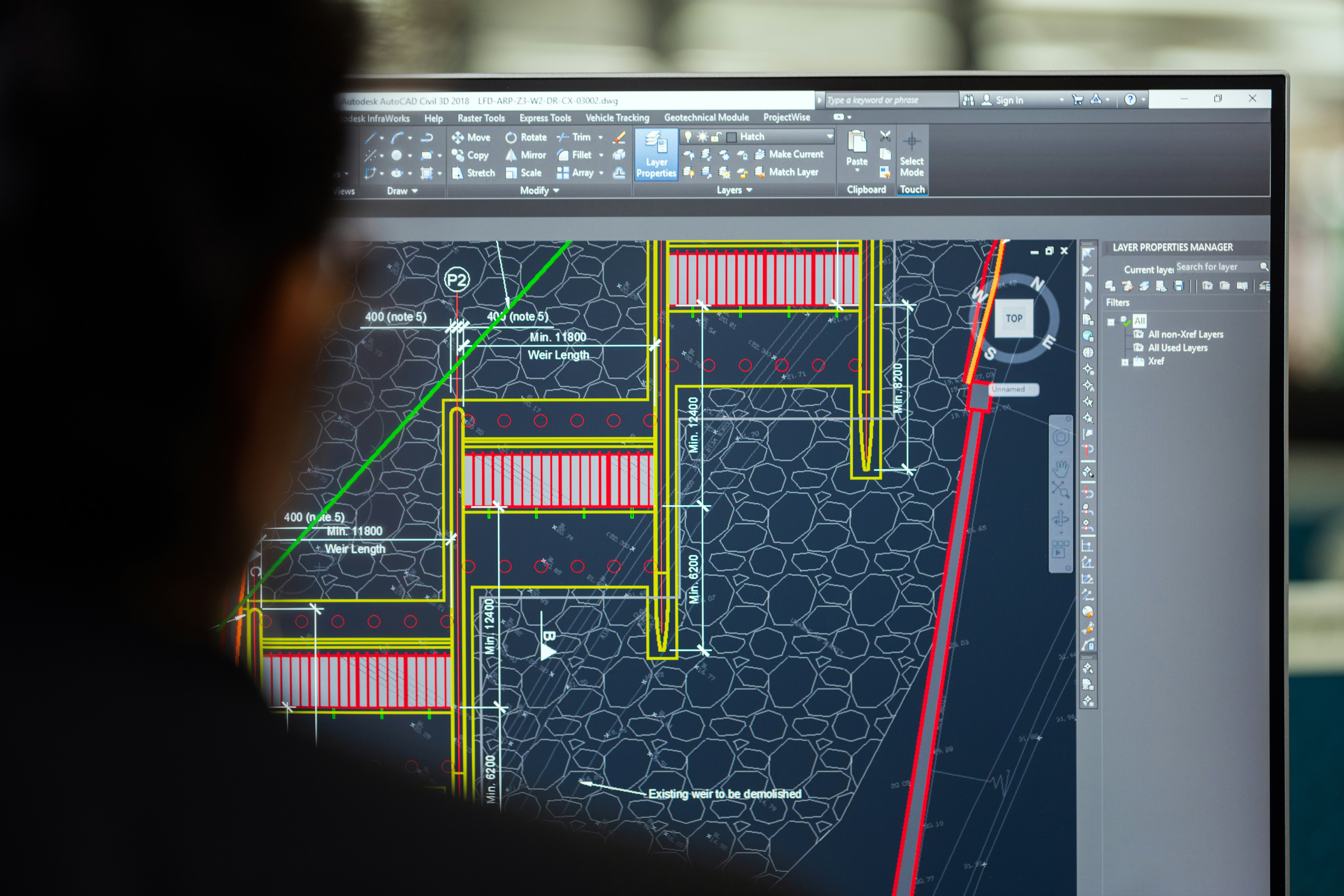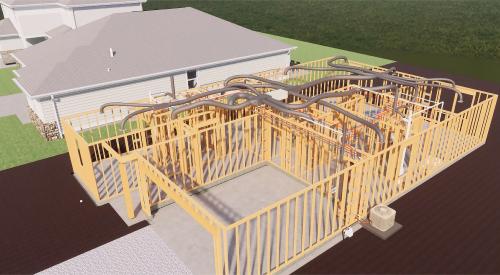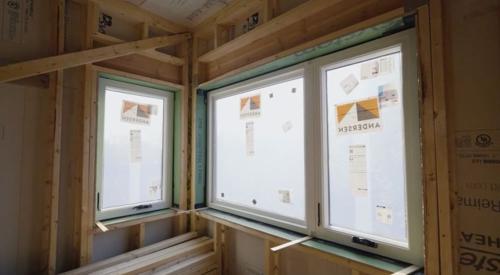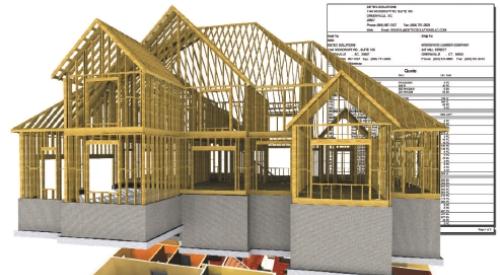The residential design and construction industry faces challenges ranging from project delays, cost overruns, design errors, and inefficient communication across the project team and with consumers and other stakeholders.
These inefficiencies lead to increased expenses and lower quality projects. But those working to stay ahead in the housing industry and maintain an edge in production, budget adherence, quality, and profitability have embraced Building Information Model (BIM).
With today’s technological advancements, utilizing BIM can revolutionize how you plan, design, construct, and manage your projects. In this article, we'll explore the key benefits of BIM and how you can leverage this technology to build smarter and more efficiently.
What is BIM (Building Information Modeling)?
Building Information Modeling (BIM) encompasses both Building Information Modeling and Building Information Management, offering a collaborative approach for various construction professionals to plan, design, and construct homes of all types—from single-family detached to low-rise multifamily—within a unified 3D model.
BIM revolutionizes building design by providing an intelligent 3D model supplemented with comprehensive data, including construction sequencing, cost, and lifecycle management information. By centralizing all relevant information in a single database, BIM facilitates design exploration, visualization, documentation, and lifecycle management to streamline project workflows and enable smoother collaboration among teams.
BIM in Residential Design and Construction
For home builders that have integrated BIM, the technology has profoundly transformed the way they do business by digitizing and centralizing project information throughout the building lifecycle. Architects, engineers, contractors, trade partners, and other stakeholders can use BIM to develop and share comprehensive digital representations that encompass not only the physical attributes but also the functional and operational aspects of the project.
Overall, BIM has become an indispensable tool for driving innovation, improving project outcomes, and shaping the future of the housing industry.
Key Components of BIM
BIM relies on several core concepts and components, including:
- Objects and Elements: All elements, such as doors, windows, walls, and structural parts, are represented in BIM as objects. These objects possess both data properties and geometric shapes.
- 3D Modeling: BIM projects use a three-dimensional approach to provide a complete view of the building design. Such models help detect potential construction clashes and analyze spatial aspects effectively for the project team, homebuyers, neighborhood groups, and governing municipalities to gain faster approvals.
- Data Integration: BIM integrates different data types, such as geometric data, attributes, time schedules, and cost estimates. Multiple stakeholders involved in a project can access and modify this data.
What are the BIM Levels?
BIM is classified into different levels based on the level of detail (LOD) and collaboration. The LOD determines how detailed and accurate the BIM model is at various project stages. The main levels of BIM typically referenced are:
- BIM Level 0: This level does not involve collaboration or information integration among project stakeholders. Each stakeholder works with their own 2D drawings and shares minimal digital information. This level uses traditional CAD drafting methods and lacks the collaboration and interoperability features of higher BIM levels.
- BIM Level 1: This level involves using 3D modeling for architecture, engineering, and construction separately. Each discipline creates its own 3D models with little collaboration.
- BIM Level 2: This level is a big step up in collaboration and integration from previous levels. It includes creating individual 3D models for each discipline, which are then shared and coordinated in a common data environment (CDE). Modeling enables improved coordination and collaboration among stakeholders, with the capability to exchange information in a standard format like Industry Foundation Classes (IFC).
- BIM Level 3: Also referred to as "Fully Collaborative BIM," this level enhances integration and collaboration. It focuses on creating a centralized project model that can be accessed by all stakeholders in real-time. This shared model allows for smooth collaboration and coordination between different disciplines, from design to maintenance.
- BIM Level 4: This level introduces a new aspect to the information model: time. This data includes scheduling information that outlines the timeframe for each phase of the project or the order in which different components will be implemented.
- BIM Level 5: This level includes cost estimations, budget analysis, and budget tracking in the information model. This level allows project owners to monitor and predict project costs.
- BIM Level 6: This level provides information that helps calculate a building's energy consumption before construction, helping designers consider more than just initial costs, enabling accurate predictions of energy needs, and allowing stakeholders to construct energy-efficient and sustainable buildings.
- BIM Level 7: This level helps efficiently manage and maintain facilities, including tracking assets and scheduling maintenance.
The benefit of BIM leveling is not only the functional upgrades at each stage, but also that builders and members of the project team can start at an early stage to get familiar and proficient before moving up at a comfortable and unified pace. In fact, starting at a later stage without any BIM experience would likely end in frustration and failure.
How Does BIM Work?
A building information model can be used throughout a project lifecycle to bring clarity and efficiency into a building's construction. Here’s how BIM works:
- Planning: BIM software helps with project planning by using reality capture and real-world data to show how a building will look in its actual environment. This process can inform and guide users, making the process easier and more accurate.
- Design: The design phase of a construction process is complex, involving conceptual design, analysis, and detailed documentation. BIM data offers detailed modeling that can help with construction organization and provide important information about design performance. It can also assist with logistics, streamline scheduling, and ensure all necessary personnel have the right information.
- Construction: BIM project specifications and shared documents help to guide and optimize production.
7 Ways to Build Smarter with BIM
Building smarter with BIM involves leveraging the capabilities of the technology to enhance efficiency, collaboration, and sustainability throughout the entire building lifecycle. Here are some key strategies for building smarter with BIM:
1. Early Collaboration and Integration
BIM fosters collaboration among architects, engineers, builders, trade partners, and other stakeholders by providing a centralized platform for sharing and accessing project information. This joint effort leads to better coordination, reduced errors and cost overruns, and improved communication throughout the project lifecycle.
2. Comprehensive Project Planning
BIM enables the creation of detailed plans and sequences, facilitating better planning and scheduling. It can also establish clear project objectives, milestones, and deliverables and ensure all stakeholders align with the project goals.
BIM also allows for spec modeling to create, organize, and share project specifications. This benefit includes importing documentation from different sources to enhance collaboration and provide a comprehensive view of the project specs. Structured templates also can aid in maintaining compliance with corporate standards and established specifications.
3: Data-Driven Decision Making
Project teams can harness the power of BIM data to make informed decisions throughout the project lifecycle. You can utilize BIM analytics and simulation tools to analyze design options, optimize building performance, and identify cost-saving opportunities.
Additionally, you can meet project requirements and conduct effective analysis by utilizing BIM's preconfigured data templates and customizable data structure. This allows you to share up-to-date complete data and documentation with relevant team members, optimizing construction delivery and streamlining facility operations.
4. Optimized Design and Construction Processes
Integrating information models and analysis improves engineering, design, and asset performance predictions. This integration is especially beneficial when incorporating BIM with existing tools such as an engineering document management system (EDMS).
Using BIM to improve efficiency and productivity, you can streamline design and construction processes. With BIM, you can also develop standardized workflows and templates, automate repetitive tasks, and leverage BIM libraries and templates to accelerate project delivery.
5. Enhanced Visualization and Communication
Visualization is crucial for understanding a building's environment and existing conditions. BIM tools offer point clouds, digital photography, and visualization capabilities to help you grasp existing features and surrounding structures. This data can be used to innovate further and identify any shortcomings in your design. You can use augmented reality (AR) and virtual reality (VR) technologies to provide stakeholders, homebuyers, neighborhood groups, and governing municipalities with interactive experiences and virtual walkthroughs of the building.
6. Integration with Emerging Technologies
You can explore the integration of BIM with emerging technologies such as artificial intelligence (AI), machine learning, and the Internet of Things (IoT) to enhance building performance and efficiency.
For example, AI algorithms can analyze building data and optimize energy consumption, or IoT sensors can be integrated to monitor building systems in real time.
7. Sustainability and Green Building
You can leverage BIM to support sustainable design and construction practices by analyzing energy performance, daylighting, and thermal comfort. You can also use BIM to optimize building envelope design, select sustainable materials, and integrate renewable energy systems to minimize environmental impact and enhance occupant comfort.
4 Benefits of Using BIM
If you're still skeptical about incorporating BIM into your projects, it's time to explore the numerous benefits it brings to the table. Consider the following benefits of using BIM for your projects:
- Better Design Insight: BIM allows designers to simulate and analyze different design scenarios, helping them evaluate the performance and feasibility of design options. This insight enables designers to optimize building performance, improve energy efficiency, and enhance occupant comfort.
- Cost Savings: BIM helps identify cost-saving opportunities throughout the project lifecycle by providing accurate quantity takeoffs, cost estimations, and value engineering options. It also helps avoid costs of delays, including lost revenue and idle employees or trades.
- Safer Construction Sites: Using BIM software can assist in spotting potential hazards and organizing on-site logistics prior to construction. A strong BIM system includes visual risk analysis and safety assessments, which can prevent physical risks and ensure safety throughout a project.
- Increased IoT Capabilities: The construction industry lacks IoT capabilities and advanced analytics. Construction sites produce a lot of data, but most of it isn't recorded or analyzed. By contrast, advanced BIM technology brings IoT capabilities to construction sites. This can lead to benefits such as more efficient equipment monitoring, inventory management, energy usage, safety protocols, and quality assurance policies.
Revolutionize Your Projects with BIM and Pro Builder
Construction projects have historically been managed using outdated methods, leading to inefficiencies, delays, and cost overruns. However, with the advent of BIM technology, project management in the construction industry has been revolutionized, offering unprecedented levels of coordination, collaboration, efficiency, and profitability.
FAQs About BIM (Building Information Modeling)
Because of the clear benefits that BIM has to offer, it’s here to stay. As such, there are a lot of commonly asked questions about BIM that every user should know before adopting the technology, as follows:
Is BIM a Form of AI?
BIM is not the same as AI, but they can work together to enhance the efficiency and accuracy of construction projects. BIM is a process for creating and managing information on a construction project across its lifecycle, while AI involves machine learning to perform tasks that typically require human intelligence.
What are some BIM Software and Tools?
Various BIM software options are available to meet different project requirements. Popular choices include Archicad by Graphisoft, Autodesk Revit, SketchUp, Allplan, Bentley Systems MicroStation, BIM 360, Chief Architect, Higharc, MiTek Sapphire, and Softplan. Open-source tools are also available like BlenderBIM and FreeCAD.
What are the Challenges and Limitations of Using BIM?
BIM has many benefits, but there are also challenges to consider. These challenges include implementation costs, resistance to change, data security concerns, and the need for specialized training.
Read Next for More Building Technology Content from Pro Builder
- Autodesk Suite Maximizes Immediate BIM Value
- ValueWebcam Tech Keeps a Watchful Eye on the Job
- Home Builder Shares How Tech Conquered Disorganization
- Revolutionizing the Building Process With Machine Interfaces
And, if you want to take your business projects to the next level, subscribe to Pro Builder's newsletter today to get unlimited access to our comprehensive solutions and expert guidance on anything design, construction, management, and more!












